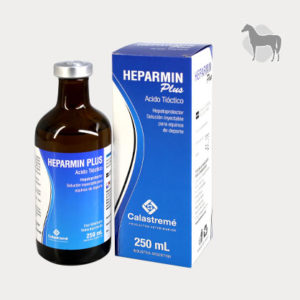Action:
This product is a diuretic and saluretic characterized pharmacodynamically by:
1- Rapid onset and short duration of diuresis. Its action does not last beyond what was planned.
2- Pharmacological activity in the entire functional area of the nephron, proximal and distal tubules and ascending segment of the loop of Henle.
3- By modifying the dose, intervals and form of administration, the amount and duration of diuresis can be regulated, with a correct dose-response ratio and a spectrum of minimum and maximum doses that can be increased 10 times.
4- Marked selectivity in the elimination of electrolytes, with an optimal balance in the Na / K ratio, practically does not produce hypokalemia.
5- In very high doses and administered for very long periods of time, it has shown optimal tolerance.
6- In the distal tubule it produces diuresis in both acidosis and alkalosis, it does not have inhibitory effects on carbonic anhydrase, it does not influence the activity of aldosterone or alter the metabolism of carbohydrates.
7- It can be administered to large and small animals.
Indications:
Horses, cattle, sheep, pigs and dogs.
Pulmonary edema, pulmonary congestion, ascites.
Due to its diuretic action, FUROCAL HAMPTON acts effectively in poisonings of various origins.
Optimal response in the following pathologies:
Horses: udder edema, pre and post-partum, preputial and scrotal edema, various non-inflammatory edema, cachectic edema or due to feeding, wound edema, snake bites, infosura, anasarca.
Cattle: udder edema (accumulation of fluid in the subcutaneous tissue of the udder, teats and abdominal wall), cachectic and parasitic edema.
Sheep: Edema in traumatic and surgical wounds, cachetic and parasitic edema.
Pigs: Edema in inflamed castration wounds.
Canines: pulmonary and bronchial edema, hydropericardium and hydrothorax, ascites (with and without liver cirrhosis), non-inflammatory cerebral edema, renal edema and combined edema of heart failure with hydropericardium).
Dosage and Administration routes:
In all cases, the doses are subject to the judgment of the acting professional.
As a guideline dose.
Horses, cattle: 0.5 to 2 mg / kg.
Sheep, pigs and dogs: 2 to 4 mg / kg.
Large animals: 5 to 10 ml. 1 to 2 times a day at 6 to 8 hour intervals. It is advisable to dose intermittently for 2-5 days, suspend and restart the following week.
Small animals: 1/4 to 1/2 ml. for every 5 kg of weight 1 to 2 times a day at intervals of 6 to 8 hours.
Do not exceed 48 hours of treatment.
Administer subcutaneously or intravenously.
Precautions:
The product should be used with care in patients with water or electrolyte imbalances.







Reviews
There are no reviews yet.